2016.6.3 Pengcheng Evening News "the Ministry of mountain economy, the rise of modern business Xuzhou portrayal"

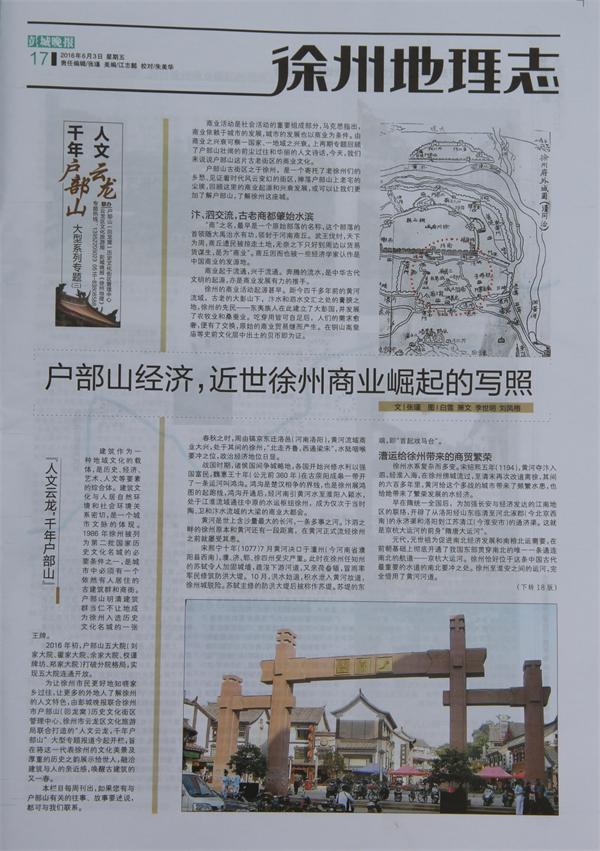
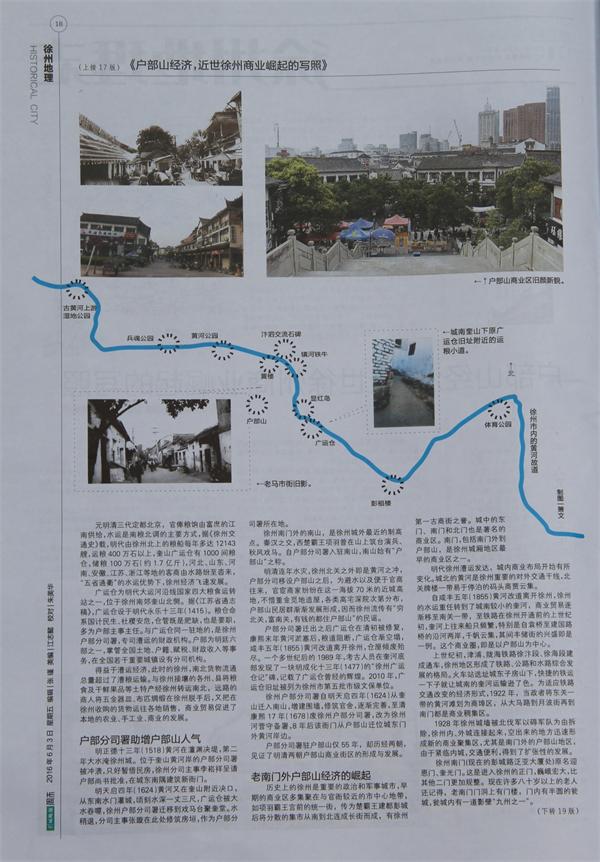
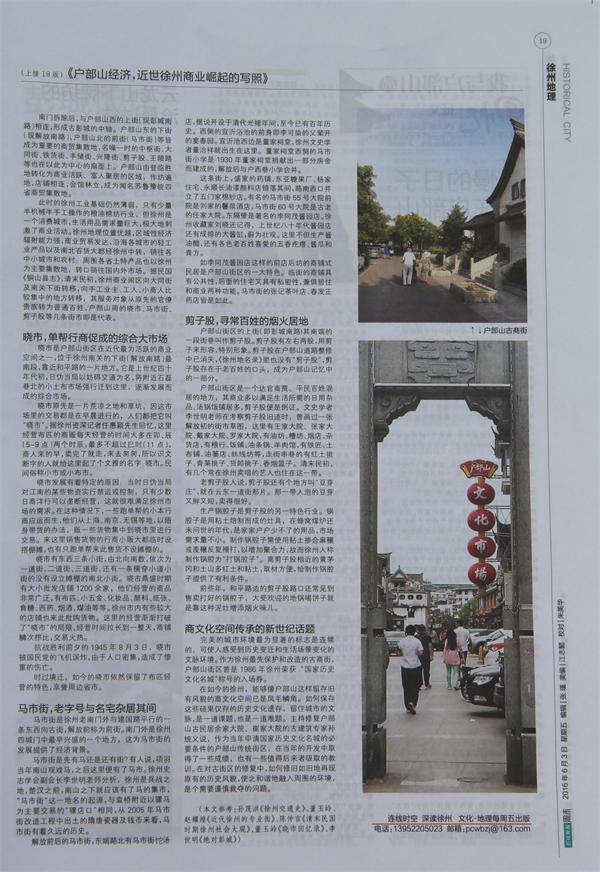
(three)
Commercial activity is an important part of social activities, Marx pointed out that business depends on the city's development, the city's development is also a condition of commerce. By the rise and fall of business can be a country, a region of the rise and fall. On the two topics reviewed the Ministry of the mountains of the magnificent past and the gorgeous humanities poem, today, we say that this old block of the Ministry of Commerce Hill culture.
It is a place where old Xuzhou's nostalgia, witnessing the vicissitudes of the times, dusting the old houses on the mountain, reviewing the commercial origins and the rise and fall of the city, or making us more Understand the Ministry of Hill, to understand the city of Xuzhou.
Bian, Si exchange, ancient business began to waterfront
"Business" in the name of the earliest is the name of a primitive tribe, the tribal leaders with the Yu flood control meritorious, sealed in Henan Shangqiu. King Wu Zhou, the world for the week, Shangqiu Adherents were swept away the land, but in desperation had to barter around to make a living, is "commercial." Shangqiu was also considered by some economists to be the cradle of Chinese commerce.
Business from the circulation, Xing circulation. Pentium of water, is the origin of ancient Chinese civilization, is also a strong promoter of business development.
Xuzhou 's commercial activities originated very early. Diaopeng, the ancestor of Xuzhou, established the Dapeng State in the Huanghe River valley, where the ancient Great Pengshan, the border between Bian River and Surabaya crossed, more than 4,000 years ago. Animal husbandry and silkworm industry. Eat and wear can be self-sufficient, the more the demand for luxury, there will be a swap, the original commercial trade and then produce. In the Tongshan Gao Huangmiao and other prehistoric cultural layer of shellfish coins that is evidence.
Wen Zhang Jin Figure l Bai Xuexiao Wen Li Shiming Liu Fengwu
"Humanities Yunlong, the Millennium Department of Mountain"
As a carrier of regional culture, architecture is a combination of historical, economic, artistic and cultural elements. Architectural culture and human settlements natural environment and social environment is closely related, is a city context of expression. Xuzhou in 1986 was listed as the second batch of national historical and cultural city one of the necessary conditions, the city must have a still inhabited ancient buildings and commercial street. The Department of the Ming and Qing Dynasties building complex to become Xuzhou selected historical and cultural city of a trump card.
At the beginning of 2016, the five courtyards (Liu Family Courtyard, Zhai Family Courtyard, Yu Family Courtyard, Quanjing Archway and Zheng Family Courtyard) were broken down and the five courtyards were opened to the public.
In order to let Xuzhou people better know their hometown in the past, so that more foreigners understand the cultural characteristics of Xuzhou, Pengcheng Evening News joint Xuzhou City Department of Hill (Huilongwo) historical and cultural district management center, Xuzhou Yunlong Culture and Tourism Bureau Jointly created the "human Yunlong, the Ministry of the Millennium Hill," large-scale special reports from the opening column, aimed at this representative of the cultural beauty of Xuzhou and the history of heavy rhyme show to the world, harmonious architecture and human intimacy, Building another spring.
This column is published weekly, if you have a history with the Department of Hill, the story to tell, can contact us.
During the Spring and Autumn Period, Zhou Yigao moved to Luoyi in the east of the Yellow River, and the business of Daxing in the Yellow River valley was in the midst of Xuzhou in the Yellow River Valley, and the political and economic status was obvious.
During the Warring States period, the vassal state contend for the city, countries began to build water to power and enrich the people, Wei Hui Wang ten years (360 BC) in ancient Xingyang Cheng Gao area opened a canal called the divide. The gap is the boundary between Chu and Han, Xuzhou is also the starting line, after the opening of the dividend, the Yellow River water diversion from Henan to Huaiyang into Ying water, in the Yangtze River to the Central Plains water transport hub in Xuzhou, Wei and Bian River watershed of the commercial metropolis.
The Yellow River is the world's largest river sediment concentration, a troubled river. Bian Si of the banks of the original and the Yellow River in Xuzhou there is some distance in the Yellow River before the official flow through Xuzhou repeatedly suffer.
Song Xining ten years (1077) in July the Yellow River burst in the state (now Henan Puyang County, southwest), Pu, Ji, Yun, Xu four states were seriously affected. At this point in Xuzhou any knowledge of the state of Su Shi is reinforced walls, dredging the lower reaches of the river, but also the pro-Dutch basket, the rate of rain and civil construction flood levees. In October, the flood began to return, stagnant water into the old course of the Yellow River, Xuzhou City out of danger. Su Shi, majoring in flood control levee is called after Sir Georg Solti. Sir Georg Solti's eastern end, that is, "the first play Ma stage."
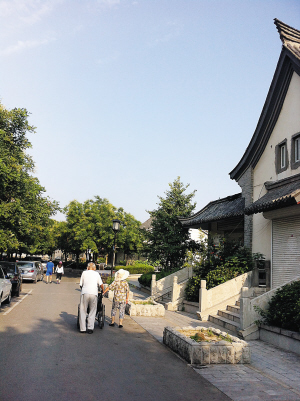
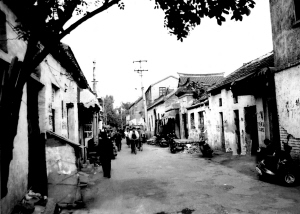
The water transportation brought prosperity to Xuzhou
Xuzhou water system is complex and changeable. Song Shaoxi five years (1194), the Yellow River seized Bian into Si, the Huaihai into the sea, in Xuzhou Pongcheng flow to the end of the Qing Dynasty again diverted from Xu, during the six hundred years, the Yellow River to this multi-war city has brought frequent Flooding, but also brought her prosperity and development of water economy.
As early as the reunification of the country in order to strengthen the Changan and the economically developed south of the Yangtze River region, opened up from Luoyang, Shandong Linqing to Hebei Zhuojun (now Beijing southwest) Yongji and Luoyang to Jiangsu Qingjiang (now Huaian) Of the Tongji Canal. This is the predecessor of the Beijing-Hangzhou Grand Canal, "Sui and Tang Grand Canal."
The Yuan Dynasty, the Yuan Dynasty ancestors to promote the economic development of North and South and the need to transport the South, in the former completely opened on the basis of the eastern part of the only north-south through the north-south waterway - Beijing-Hangzhou Grand Canal. Xuzhou is located in the most important of this ancient Chinese waterways north and south hub of the Department. Xuzhou to Huai'an between the canal, completely borrowed the Yellow River.
According to "Xuzhou traffic history" set, the Ming Dynasty by the north of Xuzhou grain ship up to 12,143 ships, transport grain transportation is the main way to the South, (About 170 million jin), Hebei, Shandong, Henan, Anhui, Jiangsu, Zhejiang and other places by the sea after another by the sea, "five provinces thoroughfare "The advantage of water, Xuzhou rapid economic development.
Guangyun warehouse for the Ming Dynasty Grand Canal along the country one of the four major food operations, located in the southern suburbs of Xuzhou Kui Shan. According to "Annals of Jiangsu Province," Guangyun warehouse located in the Ming Dynasty Yongle thirteen years (1415). Granary life of the people's livelihood, the safety of the boat, Cangguan is fat shortage, but also important positions, and more for the Ministry of the main director. The same station with the Guangzhou warehouse, Xuzhou is part of the Department of the Department, the Secretary for the transport of financial institutions. Ministry of the Ming Ting six, one of the country in charge of land, household registration, taxation, revenue and other affairs, in several important towns in the country with branch agencies.
Benefit from the transport economy, this time of Xuzhou, north and south of the total flow of goods than the grain transportation. Xuzhou border with the states, the county will be the food and fresh and dried fruits and other native products by Xuzhou transport north and south, the businessmen will be far from the hardware containers, cloth satin Xuzhou after the sale, again in Xuzhou acquired goods shipped around the sale of commercial trade promotion The local agriculture, handicrafts, business development.
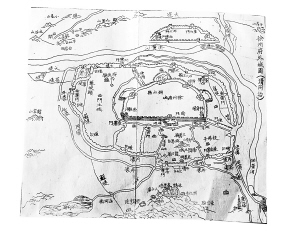
Part of the Department to help increase the Department of the Ministry of mountain popularity
Ming Zhengde thirteen years (1518) in the Chanyuan break the Yellow River, the second year flooded Xuzhou city. Kui Shan in the Yellow River shore part of the Department of the Department was destroyed, had to take temporary houses, Xuzhou branch Secretary Li Songxiang was approved by the Ministry of Housing approved the construction of new yamen in the city southeast corner.
Ming Kai four years (1624) Kui Shan in the vicinity of the Yellow River and burst, from the southeast gate of the city, an instant depth of ten feet three feet, wide warehouse warehouse flooding, Xuzhou households part of the Department of migration to play Ma Taiwan Jukui. Water slightly back, the Secretary of the main building Zhang Xuan here in the building wall, as part of the Department of the location of the Department.
Xuzhou South Gate outside the Nanshan, Xuzhou is the recent high ground. The turn of the Qin and Han, Western Chu Xiang Yu Xiang Yu in the mountains to build Taiwan troops, autumn horse. Part of the Department of Nanshan settled in Nanshan, Nanshan began "the Ministry of Hill," said.
Ming and Qing Dynasties years after the floods, Xuzhou North Pass outside the Yellow River is the red, some households moved to the Ministry of households after the mountain, in order to avoid water and facilitate business contacts, government officials have in the 70 meters above sea level near the city heights, spared no expense To find land to build houses, all kinds of high house deep courtyard distribution, the Ministry of mountain population gradually developed, and thus the spread of Xuzhou, "poor North Pass, rich South Pass, rich households Department Hill" ballads.
After the removal of some of the Department of the Secretary for the Department moved out of the warehouse in the early Qing Dynasty was repaired, the end of the Yellow River after the end of Kangxi silted, blocked grain Road, Guangyun warehouse gradually empty collapse, Xianfeng five years (1855) to leave the Yellow River diversion Xuzhou, dumping waste Do. More than a century later, in 1989, archaeologists found a piece in the bottom of the Kui River Ming Chenghua 13 years (1477), "Xuzhou Guangyun warehouse mind" monument, recorded Guangyun warehouse once brilliant. In 2010, Guangyun warehouse site was listed as the fifth batch of Xuzhou City municipal security units.
Xuzhou households part of the Department since the Ming Dynasty Kai four years (1624) moved from Kui Shan Nanshan, additional walls, build official homes, gradually improved, to the Qing Emperor Kangxi 17 years (1678) Xuzhou households waste part of the Department, Garrison Department, 8 years after the bureaucratic movement from the Ministry of the eastern part of the city outside the Yellow River shore.
Part of the Department of the Department of the Ministry of the Ministry of the mountain only 55 years, but after two dynasties, witnessed the Ming and Qing dynasties, the formation of the Ministry of Commerce Hill District and development.
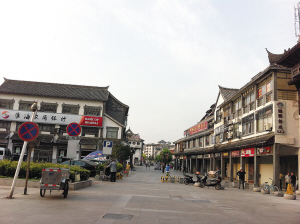
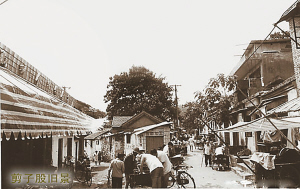
The old South door outside the Ministry of the rise of mountain economy
The history of Xuzhou is an important political and military city, the early business district and more gathered in the city center near the government office, such as the Xiang Yu feudal palace in front of the unified street, pass for the King of Chu after the capital Pengcheng scattered market From the south to the north even grow Street, Xuzhou has the reputation of the first ancient commercial street. The city's East Gate, South Gate and North Gate are also known as the business district. South Gate, including the south door to the Ministry of Hill, Xuzhou Chengxiang area is one of the earliest business district.
The Ming Dynasty, Xuzhou water transport developed, the city began to change the layout of the commercial. The Yellow River north of the city is an important external traffic trunk road, the North Pailou area easy to park the dock merchants gathered.
From the Xianfeng five years (1855) the Yellow River diversion from Xuzhou, Xuzhou's water transport to the south of the smaller Kui River, commercial trade gradually moved to the South Gate area, to the railway in Xuzhou before the beginning of the last century, Kui River traffic , Especially from the Yuanqiao to the founding of the road and bridge along the river, thousands of sail gathered during the prosperous Fengshou Street is an example. The business circle, that is, the Ministry of Hill as the center.
The beginning of the last century, Jinpu, Longhai Railway Xu Bian section, Xu Haicheng opened to traffic, Xuzhou formed a railway, highway and water comprehensive development pattern. East Railway Station location suburbs of the mountain, fast rail transport suddenly let the south of the Kui River transport Johnson color. In order to adapt to the economic form of railway traffic change, in 1922, the authorities will be the area along the Yellow River Beach is designated as the commercial port area, from the big road to the wave on the street to the south gate are commercial concentrated area.
In 1928, the walls of Xuzhou were demolished by the Northern Expeditionary Army on the grounds of obstructing the army. Xuzhou's inner and outer cities were connected. The empty commercial areas were quickly formed, especially in the Heshushan area outside the south gate. , Transport facilities, has been the expansion of the development.
Xuzhou South Gate (now Pengcheng Road Pan Asia Building Department) formerly known as Ying En Gate, Kui Guangmen. This is the main entrance into Xuzhou, towering grand, more structured than the other two. Now many of the old people over the age of eight remember, the old South Gate on the gatehouse gatehouse, the door has a semicircular urn, urn inside a wall "Kyushu".
After the demolition of the South Gate, and the Department of Shanxi Street (now Pengcheng Road) connected to form the ancient city of Pengcheng axis. The Department of the Shandong Street (now the liberation of South Road), the Department of Shanbei of the former Street (Ma Street) have become an important business distribution center, the reputation of the Central Street, Datong Street, Tiehuo Street, Fung Chu Street, , Scissors shares, Wang Ling Road, also in this as the center of the fan. The Department of Mountain by the boarding of the resort into commercial activity, the rich people living in the region, workshops everywhere, shops linked to the clubhouse everywhere, a well-known Sulu Henan and Anhui provinces and four business distribution center.
At this time of Xuzhou industrial base is still weak, only a small amount of semi-mechanical semi-manual operation of grain and oil cotton industry, but Xuzhou is a consumer city, daily necessities huge demand, greatly stimulated commercial activities. Xuzhou location, regional economic radiation ability, commercial trade developed, the coastal cities of light industrial products and most of the North-South Department Store transit through Xuzhou, sold to small and medium-sized cities and rural areas; around the province of native products are also the main distribution center in Xuzhou, Re-exported to domestic and foreign markets. According to the Republic of China, "Tongshan County", the late Qing Dynasty, Xuzhou commercial district to Datong and Nanguan under the street transfer, to the handicraft owners, workers, small businessmen are concentrated in the transfer of its service object from the original bureaucratic nobility to Ordinary people, the Ministry of the mountain city of Xiao, Ma Street, scissors, shares, and so is a representative of several markets.
Xiao City, a single help to promote a comprehensive business market
Xiao city is one of the most active commercial spaces in the Heshushan district. It is located in the southernmost section of the Lower Street (South Jiefang Road) in Xuzhou, close to the peaceful road. It is the early 40s of last century, the puppet authorities to obstruct the name of traffic, will be near the north of the small stone cloth Lei cloth market forced to move here, the gradual development of the integrated market.
Xiao City was originally a desolate land and grass pit, because this market transactions are carried out in the morning, people call it "Xiao City." According to Xuzhou senior journalist Mr. Ren Yuying recalled, here operating cloth traders operating in the day most of Mao, Chen (5-9 points) two hours, up to no more than Si (11 points), businessmen came early, sold away , Come and gone, so the knowledge of people who cut the word gave here played a elegant name: Xiao City. Popularly known as a small city or small cloth city.
Xiao city development has a specific reason: when the puppet authorities on the implementation of certain materials embargo or control, only a small number of Japanese firms can monopoly, it is difficult to meet Xuzhou market demand. In this case, a number of small business to help run a single bank came into being, they from Shanghai, Nanjing, Wuxi and other places, to carry the goods with the way, some goods are concentrated in Xiao City to trade. Here to sell goods, most of the temporary hawkers to set up a stall, there are only a single run to help sell this not set up booths.
There are three things Xiao City street, from north to south, followed by a street, two street, three street, there is a small street across the street did not set up booth north and south street. Xiaoyi heyday, the size of more than 1,200 wholesale shops, they operate a very wide range of goods, a cloth, hardware, cosmetics, paint, paper, sugar, medicine, tobacco, kerosene and so on. Xuzhou City, some of the larger shops to this purchase of goods. Here the business gradually broke the "Xiao City" limitations, operating time extended to a full day, row upon row of shops, trading fiery.
On the eve of the victory of the Anti-Japanese War, on August 3, 1945, the city was mistakenly bombed by Kuomintang aircraft, resulting in heavy casualties due to the dense population.
Time has changed, and now the city still retains the characteristics of cloth business, renowned neighboring provinces and cities.
Ma Street, old name and mingled residence during the house
Ma Street is the old South Gate of Xuzhou and Jianguo Road, an east-west parallel to the ancient street, before the liberation of the former Street. Outside the south gate of Xuzhou four city gate in the earliest prosperity of a place, which is the development of horse market provides economic background.
Ma Street is the first horse or street? Some people say, Xiang Yu Nanshan view of the year the horse, after which there will be a horse city. Xuzhou is the war of the land, before the Chu Han, Nanshan should have a horse under the market, "Ma Street" the origin of names, with Yuanqiao near the mule Ma as the main transaction of the "mule stores" the same, from the 2005 Ma Street reconstruction project in the Sui and Tang porcelain unearthed and coins, Ma Street has a long history.
Before and after the liberation of the Ma Street, the eastern end of the road north of Ma Street shop, said to open in the Qing Dynasty Guangxu years, has been a hundred years of history. Yiyi bath on the west side of the predecessor that can be dyed by fathers to open the feast Spring Garden. Yi Yi pool west of the Dong family ancestral hall, Xuzhou scholar Dong Zhixiang was born here. On the west side of Dongjia Ancestral Hall, Ma Street Primary School was built in 1930 as part of the donation of Dongjia Ancestral Hall. After liberation, it was merged with Huxiang Primary School.
This street, Shengjia pharmacies, East Asian candy factory, Yang home, Yongshun long paint paint store scattered during the South Road, West Side of the five-door cotton yarn shop. The famous Ma Street No. 55 compound front yard is Liu Xinquan hotel, Ma Street, 60 compound is the old Ren compound. East is the famous Li Tongmao sauce shop next door. Xuzhou collectors Liu also remember that eighties of last century, there are rows of soy sauce shop row of miso cylinder, spectacular. Here not only the production of soy sauce vinegar, there are colored people love the spicy pimple, Jianggua and green side.
Such as Li Tongmao sauce shop front shop shop front of the shop-style residential area is a major feature of the mountain. Street shops with public nature, the back of the house also has privacy, both residential and commercial functions. Ma Street, Zhang tea shop in mind, spring is pharmacy are all so.
Scissors stocks, ordinary people's fireworks home
Department of Mountain Street Street (ie, Pengcheng South Road) at the southern end of a street called the scissors. Scissors shares have left and right shares, with scissors to describe, special image. Scissors shares in the Ministry of Hill Road renovation has disappeared, "Xuzhou gazetteer" where there is no "scissors unit", scissors stocks exist in the people's mouth, as the Ministry of the mountain part of the memory.
Department of mountain households is an official merchant, civilians mixed place, and its business to meet the daily necessities of daily necessities, soup pot mostly rice, scissors unit is an example. Li Shiming, a scholar of literature and history, has painted a sketch of the market at the beginning of liberation in the inspection of the old stock of the scissors. There are Wang's compound, Zhang's compound, Dai's compound, Luo's compound, Smoke shop, grocery store, a grain shop, rice shop, fritters, mutton Museum, a blacksmith, Tu Bu, oil baskets shop, silk line Square, etc., take the streets to pick the red soil, pick vegetables, groceries, cigarettes. At the end of the Qing Dynasty, there are several artists often sing in Xuzhou live in this area.
The old scissors Share said, there is a place called scissors shares "bean sprouts village", in a street in the East that piece. That area of people sprout bean sprouts fat and short, sell very well.
Production of pot Ziqiang is another feature of the industry scissors. Pot cavity is baked with clay from the stove, honeycomb stoves in the era has not yet come out, is the indispensable supplies of every household, the market demand is not small. Production of pot cavity need to use clay mixing Ma Rang or Mai Rang repeatedly beat, in order to increase the cohesive force, so Xuzhou person making pot cavity as "playing pot cavity". From the scissors shares similar Huangmao Gang and soil Hill and more red clay and clay, drawn to facilitate the production of pot cavity provides favorable conditions.
A few years ago, the roadside roadside scissors intersection is also common to sell the pot to lay the pot, the popular pot to drink pancake is to rely on this stove to add fireworks flavor.
The New Century Topic of the Spread of Shang Culture
Perfect city environment is the most significant signs of continuous, can make people feel the historical changes and changes in the context of life context context. Xuzhou as the first to protect and transform the ancient business street, the Ministry of Mountain District in 1986, Xuzhou was awarded the "national historical and cultural city" title tickets.
In today 's Xuzhou, such as the Ministry of Hill to retain the old style of the business culture space is the phoenix capillaries angle. How to preserve the only remaining historical and cultural relics of these fruits, to retain the context of the city, is a topic, but also a problem. Presided over the restoration of the Department of the Ministry of the ancient house more than the courtyard, Cui Grand Courtyard of the ancient building expert Sun Tongyi said, as the year for the national historical and cultural city of the necessary conditions of the traditional mountain blocks in the year of development has made some achievements, There are some lessons worthy of later learned. In the restoration of ancient blocks, how to repair the old as the old style of reproduction of the original, so that harmony into the surrounding environment, is a need to carefully determine the problem.
(This article refers to: Sun Maohong "Xuzhou traffic history", Dong Yuling, Zhao Yaohuang "modern Xuzhou professional street", Chen Zhongyan "Qing Dynasty" Xuzhou social grand ", DongYuLing" Xiao city memoir ", LiShiMing" absolute PengCheng ");
Connection time and space deep read Xuzhou culture · Geography published every Friday
Tel: 13952205023 E-mail: pcwbzj@163.com
Sina microblogging: @ Xuzhou Folk Museum
Tencent microblogging: @ xuzhouminsubowuguan















